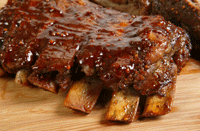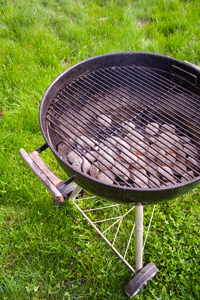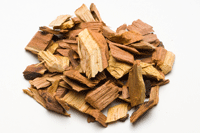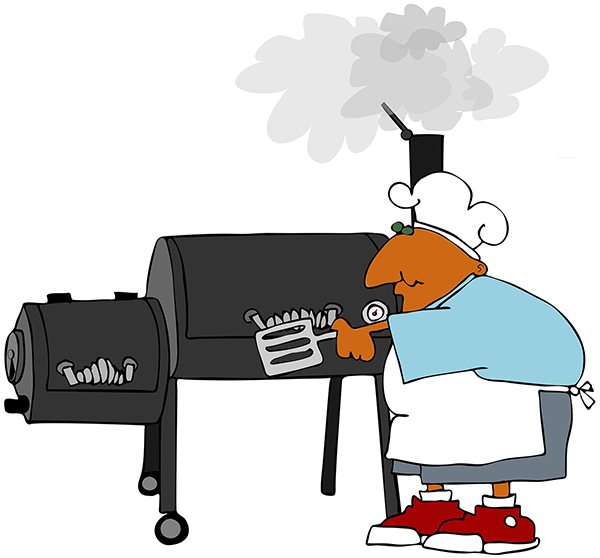Want to Learn How to Barbeque But Don’t Know Where to Start?
Anyone can learn how to barbeque by performing and practicing the basic steps of low and slow barbeque cooking. The goal of this page is to give you the basic steps for planning, preparing and cooking your barbeque dishes.
We want to keep it simple for the new cook so that he or she can learn the “science” part of cooking, so bear with us if some of the steps seem obvious. Once you know the basics we will move on and spend more time on the “art” of achieving great “Q” results on other pages.
Our Motto is to Know the Science and Practice the Art
 Before we start to focus on how to barbeque lets make sure that you understand the difference between barbeque and grilling. In many circles barbeque is defined as any food cooked outside which includes cooking on a grill or smoker.
Before we start to focus on how to barbeque lets make sure that you understand the difference between barbeque and grilling. In many circles barbeque is defined as any food cooked outside which includes cooking on a grill or smoker.
Grilling is cooking directly over high heat (usually over 500 degrees).
Smoker cooking is characterized by lengthy time durations at low temperature (from 200-250 degrees) over a smoke producing fire.
Barbeque purists will argue that barbecuing is limited to the latter and does not include grilling.
I find myself in the purist’s camp on this point so our site follows their definition. Anyone that considers himself (or herself) a good barbeque cook will probably agree.
Just make sure that you educate the differences to your friends, family, and acquaintances (as a matter of “real” BBQ policy).
Barbeque Steps:
- The first step in learning how to barbeque is that you must have use of a smoker.
There are as many types and styles of barbeque smokers as there are barbeque cooks. They all get the job done because, remember, the objective is to cook it slow while enveloped in smoke and that means you can cook it on almost anything that can contain the smoke and provide a heat source.
 Since we assume that you are new to this we, again, want to keep it simple….. A kettle grill with the lid closed is one of the simplest means to smoke but if you are serious about learning how to barbeque investigate a dedicated smoker….just be aware they range in cost from $250 to $6000!
Since we assume that you are new to this we, again, want to keep it simple….. A kettle grill with the lid closed is one of the simplest means to smoke but if you are serious about learning how to barbeque investigate a dedicated smoker….just be aware they range in cost from $250 to $6000!
- The second thing you should do is to decide what cut of meat you want to purchase and cook.
You probably already have your preference (we certainly have ours). If you are partial to pulled or shredded pork then you obviously want to select a Boston butt or picnic shoulder.
Most pork rib aficionados prefer the baby back variety. Our family likes spare ribs better.
Texans love their beef brisket (me too!). It?s an easy choice so decide and go to your favorite meat market, buy your favorite cut and start the process of training for how to barbeque.
- The third thing to do is to season the meat.
Clean your cut with water and pat dry. Many barbeque cooks like to trim fat from certain cuts like shoulders and briskets but it’s ok to cook as is.
The key prep with ribs is that you must peel away the membrane called the “fell” on the concave side of the rack to allow full absorption of seasoning.
To season your meat you need a rub. A rub is a combination of spices tailored to taste that flavors the meat. The rub and other flavorings are the artful secrets of great “Q” cooks.
You can develop your own, armed with a basic knowledge of the key ingredients. It is a key component in learning how to barbeque.
Some cooks like to prepare the surface of the meat by covering with a “wet” ingredient such as yellow mustard, olive oil, or Worcestershire sauce. Once you wet the meat then sprinkle on your dry spice combination.
Put your cut in a sealable container and marinate in the refrigerator for at least two hours. If you have time it’s better to let it marinate for 24 hours.
We’ve recently switched to using our FoodSaver machine for marinating. If you are not familiar with these machines they allow the home user to vacuum seal food for refrigeration and freezing. It does a great job of marinating because vacuum sealing the seasoned meat seems to force more of the marinade to soak in.
- The fourth step is to select your cooking fuel.
Most cooks use charcoal briquettes or lump charcoal as the primary fuel for cooking. For the new cook who wants to kick it up a notch we highly recommend using lump charcoal as the fuel.
It is a purer form of charcoal unlike charcoal briquettes. Charcoal briquettes include artificial binders that introduce unwanted components to your meat.
Your unique smoky flavoring comes from adding wood chips or chunks to your charcoal fire. Depending on the type of wood, each imparts a different flavor.
 The wood type could also influence the cooking time (due to the density of the species of wood). Just be sure to let them soak in a water bucket for an hour before placing on the coals. Otherwise the wood will burn to quickly.
The wood type could also influence the cooking time (due to the density of the species of wood). Just be sure to let them soak in a water bucket for an hour before placing on the coals. Otherwise the wood will burn to quickly.
Many of your professional barbeque cooks stoke their fires solely with different types of hardwood such as hickory, apple, or cherry.
- The fifth and most important step is to manage the temperature and time.
To get the best results it’s critical to keep the temperature in the smoker within a consistent range and to check the internal temperature of the meat. You should become familiar with the temperatures in this table and manage the process for great barbeque.
If you don’t learn anything else on this how to barbeque page you must embed in your mind that temperature control is the key to good barbeque.
How do you manage temperature? Obviously, you need to have good temperature control tools.
- The sixth step is to wrap foil around the meat about two thirds into the cooking process.
Many barbeque cooks will wrap a double layer of foil around their meat at some point during the cooking process. Depending on how much smoke flavoring you want will determine when to wrap.
The effect of the wrap is to render the meat to be exceptionally moist and tender (essentially braising to complete the cooking process). It’s what makes barbecuing such a passion.
- The seventh step in learning how to barbeque is to sauce or glaze the meat in the last 20-30 minutes (if sauce is desired) then remove from heat and let it rest before serving.
If you are using a sauce then do it at the end of the process. Avoid using sauces that contain a lot of sugar because sugar burns.
- The eighth and final step is to get a beer and relax. Enjoy your barbeque!

